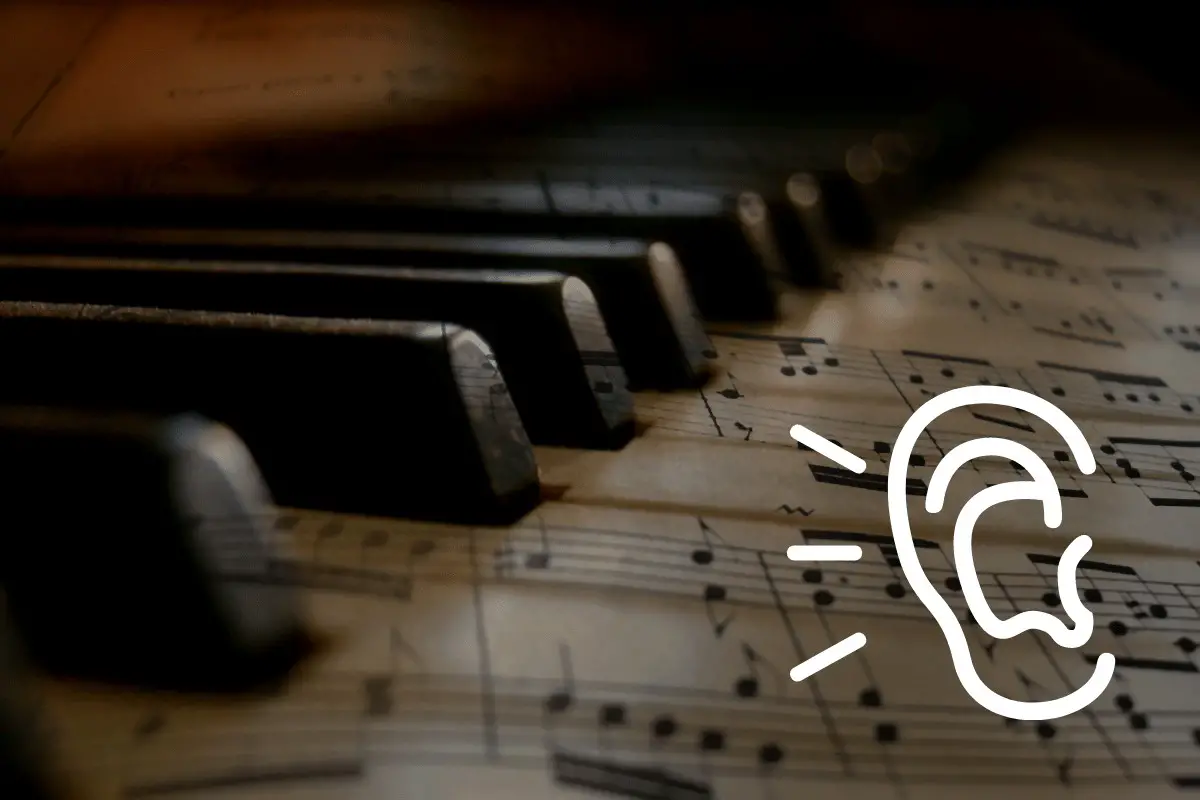The piano is one of the most iconic and popular of all musical instruments.
Even if you’re an expert on another one, if you don’t know how to play at least a little piano, you’re always judged as a lesser musician by the public.
But if you stop to think about it, do we really know how to describe a piano sound?
The piano sound is described in many ways, but the most common words include sweet, round, dark, and rich. Smaller pianos and upright pianos tend to have a brighter, thinner, and more aggressive sound. Larger pianos, such as grand pianos, have a deeper tone with more harmonics and complexity.
If you’re short on words to describe a piano, let’s look at some you may want to consider.
Table of Contents
Words To Describe Piano Tone
Here are some words you can use to describe a piano’s sound:
| majestic | peaceful | elegant | bright |
| strong | romantic | graceful | deep |
| vibrant | dreamy | charming | full |
| explosive | serene | enchanting | powerful |
| jagged | ethereal | captivating | booming |
| harsh | heavenly | lovely | loud |
| piercing | angelic | dark | thunderous |
| sharp | celestial | round | sweet |
| clear | beautiful | complex | soft |
| crisp | clean | rich | mellow |
| light | delicate | gentle | smooth |
| tender | subtle | quiet | low-pitched |
| soft | silky | velvety | warm |
| cozy | intimate | soothing | calm |
The Size Of The Piano Impacts The Sound
The size of the piano affects its sound.
Smaller pianos give off a brighter, sharper, and more defined sound than larger ones. This is because smaller pianos produce less dampening from the strings, which allows them to vibrate harder and longer.
Larger pianos also have a thicker sounding board that absorbs vibrations better, so they make a softer, smoother, and richer sound than smaller ones.
As for upright pianos, they tend to be louder and brighter than grand pianos but still lighter and quieter than full-sized concert grand.
Skill also affect piano sound. Check out Flowkey for a great way to learn piano online with 100s of lessons and 1,000s of songs.
What About Different Types Of Pianos?
There are two main types of pianos: the grand piano and the upright piano.
Grands are large, heavy, and loud.
They are typically used in churches, orchestras, and other classical music where their size and weight help them stand out.
Uprights are smaller, lighter, and quieter.
They are usually found in homes and studios.
These are both acoustic pianos.
But what about electric keyboards or digital pianos?
Unlike acoustic pianos, a digital piano’s tone is defined by their programming, so they could theoretically sound like anything!
A modern piano will also err on the side of complex, full, and brilliant sound.
Older pianos, like those back in Mozart’s day, tend to have a brighter sound.
Onomatopoeia For Piano Sounds
You’ve probably heard a lot of different words to describe a piano’s tone, but what about onomatopoeia?
Onomatopoetic words are words that imitate or approximate the sound of something.
For example, “squeak” describes a squeaky noise. You might say, “the squeaker was making a squeaking sound.”
Or, “a squeal” would mean a high-pitched scream.
“Slam,” “crash,” “bang,” and “thud” all describe a sudden impact.
Here are some examples of onomatopoeia piano sounds from single notes to whole chords over the entire piano:
- Plunk
- Tink
- Bum
- Bang
- Diddle
- Boom
- Doodle
- Dum
What Affects A Piano Sound?
A few things affect the sound of your piano. These include:
Keyboard action – How hard the keys activate the hammers when you press them down.
Hammer action – How much force the hammer has to push against the string.
String tension – How tightly the strings are pulled.
String gauge – The thickness of the strings.
Harmonic content – How many overtones there are in the notes.
Materials – Different materials used in the construction of the piano will also affect the sound and, specifically, the blend of harmonics you hear.
Some woods, like mahogany, are darker sounding than others, like maple.
Finishes – Piano finishes also influence the way a piano sounds. Some finishes are heavier and warmer sounding than others.
These factors combine to create the unique sound of each instrument.
Examples Of Different Piano Sounds
In this section, we’ll look at some example videos of different types of piano sounds.
As you listen to each of these, ask yourself the following 6 questions:
- What words would I use to describe the sound?
- How is the performer helping to enhance this sound?
- How does the type of piano impact the sound words I chose?
- Am I reacting to the piano tone or the piece of music being played?
- How might this change if the song was played on another keyboard instrument, such as the organ?
- How do you think a soft sound or loud sound affects the words you’d use to describe the tone?

